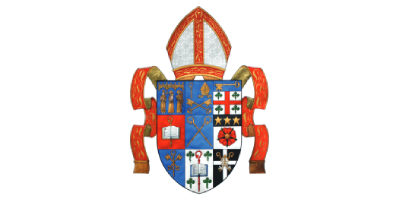
There is a wonderful moment in the final scene of Frank McGuinness’s iconic play, Observe the Sons of Ulster Marching towards the Somme, when the young Ulster soldiers, about to go ‘over the top’ on the morning of 1st July 1916, start discussing the rival merits of the rivers of Ulster – the Lagan, the Foyle, the Bann. Then they suddenly realise that they are standing there near another river, the River Somme, and the discussion becomes more excited and excitable. One of the soldiers calls out that now the Somme is the Lagan, the Foyle, the Bann. This river, the Somme, is now theirs. The Somme has somehow become a river of Ulster.
Few images could more perfectly encapsulate that connectedness between the Somme and Ulster. For many people of that province, the Somme and Ulster have, for a hundred years, belonged together in the imagination of succeeding generations. This connectedness is something we celebrate today, but we do more.
The Somme, the Lagan, the Bann, the Foyle all need to recall what a river is, and what rivers are. They flow, they change, or they are no longer rivers but stagnant pools. The Greek philosopher Heraclitus reminds us that one can never step twice into the same river. It is not the same river because of the flow of water. We think of a river as forever the same and, in many respects, this may be so, but the river does not remain entirely the same. As we recall with thankfulness and even awe, those young men who, one hundred years ago, chose to join up and come to this place for what they believed was a righteous cause and where so many of them died, we do them no service if we do not relate them to today and to our hopes and prayers and aspirations for the future.
One week ago, with my friend and colleague Eamon Martin – the Roman Catholic Archbishop of Armagh – we stood here, at this Ulster Tower, with a group of young people from all parts of Ireland, and representing both our Christian traditions – traditions which for so long have seen themselves as apart, even at enmity with one another. We prayed, we kept silence, and we reflected, all in the sombre realisation that many of those who had died here at the Somme were of an age with the young people who were part of our group.
But we were also aware that the metaphorical river, like every river, flows on. Those soldiers who died here were now part of us, but we would do them no honour if we saw their young lives and early tragic deaths only as sad or even sacred history. They point us beyond themselves, and move us beyond ourselves to a future which they believed would have been for them something of infinite hope and possibility. We must believe in a hope of the future for our young people, as they must believe in it for themselves. A week ago, we prayed in this place for true peace, God’s peace in our lives and for our world. And this must surely also be at the heart of our praying today.
Both the Hebrew and Christian scriptures readily relate the image of the river to the presence and the purposes of God, perhaps most emphatically in Psalm 46: ‘There is a river whose streams make glad the city of God, the holy habitation of the Most High.’
Close to this place is our river, the Somme – the Somme representing a connectedness for all time with many men and women, and not only in Ulster nor only for one Christian tradition. In one sense, this Somme is the same river as it was one hundred years ago, on Saturday 1st July 1916. In another sense it cannot be, and nor is it – organically – precisely the same river.
As we now remember, with true and gracious recognition, courage, commitment, service and sacrifice, we also allow that river of remembering to flow, and to carry us with it on to the new place to which we are all summoned by God in Christ – that place of hope, of peace … and even of joy. Amen.
